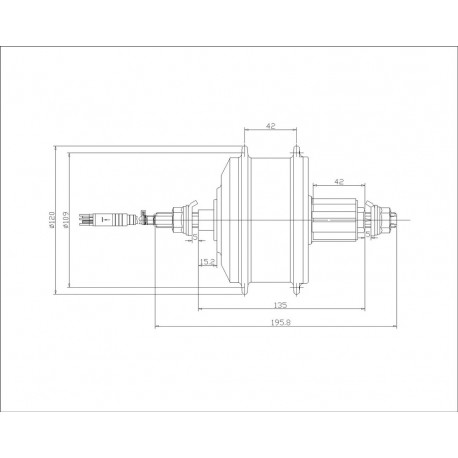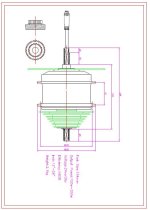Jasonv8z
1 W
After talking with Aikema, the larger H motor is available in Cassette form, but only in 145mm width. Since 15mm of this width is solely for disc brake clearance, I propose machining the areas circled in red to 2.7mm. This will give us a width of 132.5mm, allowing us to fit bikes between 130 and 135mm, but making the disc brake option useless. Since almost all road bikes and many mountain bikes accept rear rim brakes, it seems like an acceptable compromise.
For those stuck with using a rear disc brake, you can either use a freewheel Q100H, or spread your frame to 145mm.
Thus the proposed lineup would be:
Q100H CST 328RPM 132.5mm Rim brake only!
Q100H 328RPM 135mm
0.35 laminations for all. It shouldn't be a problem to order different wind motors, so chime in or PM me if you guys want 260 RPM or some other speed as well. In the future, I see the possibility of a 142mm thru axle version which is disc brake compatible, but that is the future.
Comments? Suggestions?

For those stuck with using a rear disc brake, you can either use a freewheel Q100H, or spread your frame to 145mm.
Thus the proposed lineup would be:
Q100H CST 328RPM 132.5mm Rim brake only!
Q100H 328RPM 135mm
0.35 laminations for all. It shouldn't be a problem to order different wind motors, so chime in or PM me if you guys want 260 RPM or some other speed as well. In the future, I see the possibility of a 142mm thru axle version which is disc brake compatible, but that is the future.
Comments? Suggestions?




